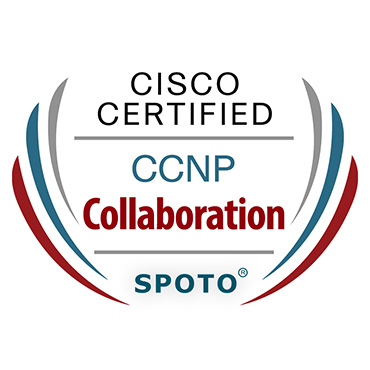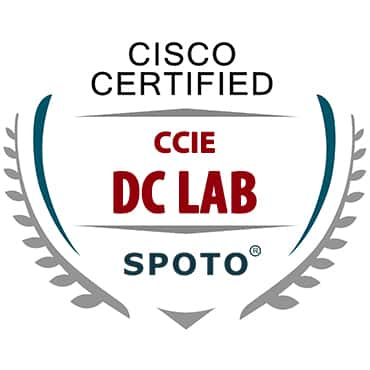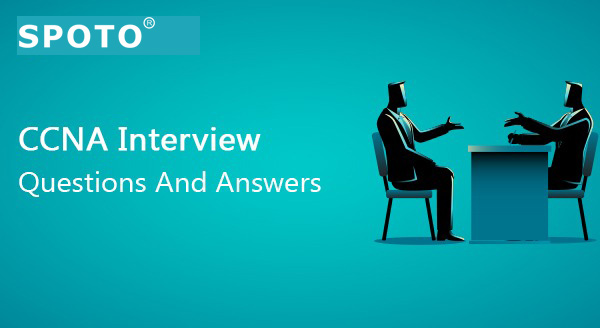Looking for a CCNA position? Are you confused about the interview questions? SPOTO will then help you explore all options and build an excellent career as a CCNA engineer. the abbreviation of Cisco certified network engineer (CCNA), is Cisco information technology certification. CCNA is the quasi-certification of Cisco Career certification. CCNA positions are located in cities such as Bangalore, Pune, Chennai, and Hyderabad, as a network support engineer, network and system administrator, technical support engineer, desktop support engineer, hardware and network engineer, system engineer, network engineer L1, customer, etc. A CCNA job interview Q & A page designed by our experts will help you attract the attention of recruiters and make your job search process easier.
Question 1. What Is A Node?
Answer: A node is the connection point on the network for data transmission. It can be a computer or printer or any type of device that can send and receive data over the network.
Question 2. What Is The Purpose Of The Data Link
Answer: The work of the data link layer is to check if the message is sent to the correct device. another function of the layer is to frame.
Question 3. When Does Network Congestion Occur?
Answer: The work of the data link layer is to check if the message is sent to the correct device. another function of the layer is to frame.
Question 4. What Are The Criteria Necessary For An Effective And Efficient Network?
Answer: In order to establish an effective network, there must be available backup paths, convergence should be fast, and no matter what happens, the network must not be paralyzed. The network should be cost-effective and have appropriate security.
Question 5. What Is The Function Of The Application Layer In Networking?
Answer: The application layer supports the communication components of the application and provides network services for application processes that span the OSI reference model specification. It also synchronizes applications on the server and client.
Question 6. What Is 100basefx?
Answer:100BASE-FX is a version of Fast Ethernet over optical fiber.
Question 7. Utilizing Rip, What Is The Limit When It Comes To Number Of Hops?
Answer: The maximum limit is 15 hops. A value higher than 15 indicates that the network is unreachable.
Question 8. What Does The Show Protocol Display?
Answer: The show protocol command displays the global and interface-specific status of any configured Level 3 protocol.
Question 9. What Is As (autonomous System)?
Answer: A group of devices under one management is called AS.
Question 10. In Configuring A Router, What Command Must Be Used If You Want To Delete The Configuration Data That Is Stored In The NVRAM?
Answer: Erase startup-config is a command to delete pre-configuration files on the router.
Question 11. What Is The Use Of “service Password Encryption”?
Answer: The service password-encryption command encrypts the plain text password into a type 7 password. These are not very secure and can be easily decrypted.
Question 12. What Is a DHCP Scope?
Answer: The DHCP scope is an IP address range from which the DHCP server will assign IP addresses to clients.
Question 13. What Is Round Trip Time?
Answer: RTT is the propagation time between two nodes. This is the time it takes to send a packet from the interface and receive an acknowledgment.
Question 14. What Is The Difference Between Full-duplex And Half-duplex?
Answer: Although both are communication devices and are used to send and receive data, full-duplex can help you send and receive data at the same time, while half-duplex cannot receive data when sending data.
Question 15. What Does Mtu Stand For?
Answer: MTU stands for “Maximum Transmission Unit”. When configuring the router, the default MTU will be set. The MTU determines the maximum size of data packets sent over the network. You can increase the MTU of the entire network, but this setting usually reduces the network speed compared to smaller MTU settings. Some network applications require a larger MTU size, this is when you need to manually configure the MTU size on the router.
Question 16. What Is The Difference Between Broadcast Domain And Collision Domain?
Answer: The broadcast domain is a domain. If forwarding broadcast frames, each device will pay attention to and receive data. In the conflict domain, the chance of data conflict is the largest. Like in a hub, if two or more send traffic at the same time, the data will collide between the two, and no device will receive the data.
Question 17. Which Feature Should A Routing Protocol Have To Support Vlsm?
Answer: It should include the subnet mask of each destination address.
Question 18. What Is Subnet? Why Is It Used?
Answer: Subnets are used in IP networks to decompose larger networks into smaller ones. It is used to optimize network performance because it reduces traffic by dividing a larger network into smaller networks. It is also used to identify and isolate network problems and simplify them.
Question 19. What Is Network Latency?
Answer: Network latency refers to the performance of one device when communicating with another device. Network latency is affected by bandwidth speed, network card performance, cable connections, and congestion. High latency may also mean that the user will not be able to communicate properly with the application, and if the latency is too high, it will “time out”.
Question 20. What Is Poe (Power Over Ethernet)?
Answer: POE allows current to be carried through cables rather than power lines. It minimizes the number of wires required to install the network.
Question 21. What Are The Different Types Of Password Used In Securing A Cisco Router?
Answer: There are five types of passwords can be set on a Cisco router:
Console
Aux
VTY
Enable Password
Enable Secret
Question 22. What Is The Difference Between CSMA/cd And CSMA/ca?
Answer: CSMA / CD stands for Carrier Sense Multiple Access with collision detection. This is a media access control method in LAN access that uses early Ethernet technology to overcome conflicts. CSMA / CA means carrier sense multiple access with collision avoidance. It is used in wireless networks to avoid conflicts.
Question 23. What Is The Difference Between User Mode And Privileged Mode On A Cisco Router?
Answer: These two models are self-explanatory to some extent. User mode allows users to view router status and basic system information. Using privileged mode to access status, the router can be configured and all status messages and errors can be viewed. User mode and privileged mode separate standard users on the network from network administrators. They not only need to view the router status, but also need to change the router configuration.
Question 24. What Is The Size Of IP Address?
Answer: IPv4 is a 32 bits address and IPv6 is 128 bits address.
Question 25. What Is The Difference Between ARP And RARP?
Answer: ARP stands for Address Resolution Protocol. ARP is a protocol used to map IP addresses to physical computer addresses. RAPR stands for Reverse Address Resolution Protocol. RARP is a protocol for mapping MAC addresses to IP addresses.
Question 26. What Is The Difference Among Straight Cable, Cross Cable, And Rollover Cable?
Answer:
Straight cable: Straight cable is used to connect different group devices. For example: Switch- Router.
Cross cable: Cross cable is used to connect the same group devices.
For example: Switch-Switch.
Rollover cable: Rollover cable is used to connect the console port to the computer.
Question 27. What Is The Difference Between Rip And IGRP?
Answer: When sending traffic on the network, a router (the default gateway in Windows computer terminology) determines how to route traffic. RIP determines where to send traffic by determining the shortest “hop count”. The hop is the next router in the traffic path. Each router is considered a hop. With IGRP, more factors need to be considered. IGRP considers bandwidth availability, MTU, reliability and hop count.
Question 28. What Is Checksum?
Answer: The checksum is a count of the median of the transmitted data contained in the data so that the receiver can check whether the same number of digits has been reached. If the counts match, it is considered that a complete transmission has been received.
Question 29. What Are The Possible Ways Of Data Transmission In CCNA?
Answer: These are the three possible ways of data transmission:
Simplex
Half-duplex
Full-duplex
Question 30. What Are The Different Types Of Networks?
Answer: These are the two major types of networks:
Peer-to-Peer Network
Server-based Network
Question 31. What Are Data Packets?
Answer: A data packet is an encapsulation unit that transmits information on the network. The data package contains the sender’s information, the recipient’s information, and the contained data. It also contains a digital identification number, used to define the sequence and packet number. When you send data over the network, the information is divided into data packets. The receiver then puts these packets together to be able to read the information. Basically, the data packet contains the information and routing configuration of the transmitted message.
Question 32. What Is Gateway-to-gateway Protocol?
Answer: The gateway-to-gateway protocol is now obsolete. This is used to route datagrams between Internet gateways. It uses the minimum hop algorithm.
Question 33. What Is The Main Difference Between Full And Half Duplex?
Answer: In full-duplex, communication is performed from both sides, while in half-duplex, communication is performed in one direction.
Question 34. What Is Point-point Link?
Answer: The connection between two nodes of the network is called a point-to-point network, and the link connecting the two nodes is called a point-to-point link.
Question 35. What Is VLAN?
Answer: VLAN stands for Virtual Local Area Network.
Question 36. What Are Routers?
Answer: The routing process is done by devices called routers. The router is a network layer device.












Comments